| St. Josephs Industrial School, Artane | |
|---|---|
 | |
| Location | |
Ireland | |
| Information | |
| Type | Industrial |
St. Josephs Industrial School, Artane was an Industrial School run by the Christian Brothers in Artane, Dublin from 1870 to 1969.
| St. Josephs Industrial School, Artane | |
|---|---|
 | |
| Location | |
Ireland | |
| Information | |
| Type | Industrial |
St. Josephs Industrial School, Artane was an Industrial School run by the Christian Brothers in Artane, Dublin from 1870 to 1969.
On 28 July 1870, the Artane Industrial School for Roman Catholic Boys, also known as St Joseph's, was officially certified to receive boys up to the age of 14 committed by magistrates for matters such as destitution, neglect, truancy and minor offences. The school was opened at the former site of Artane Castle on fifty six acres of land. Dormitories accommodated up to 150 boys. The dining area or refectory accommodated all 825 boys at one sitting. [1] The facility comprised the School, the trade shops and the farm, in addition to the Community house.
The school was set up in Artane House and buildings were constructed to designs by Charles Geoghan from 1871 to 1879 at a cost of £20,000. [2]
Artane reached its peak enrollment of 830 in 1948, when numbers began to decline. Courts sent boys to Artane for reasons of inadequate parental care, destitution, neglect, truancy or the commission of minor offences. [3] Adoption, fostering and boarding-out led to a decline in the number of children who would otherwise have entered the industrial schools. Artane was the largest industrial school, making it the most affected by these developments.
In 1936 the Cussen Commission inquiry into reformatories and industrial schools concluded that the school was too large and recommended that it be split into four schools. [4] There is no indication of any follow-up on this recommendation by either the Congregation or the Department of Education. The commission was also critical of the level of education provided and the adequacy of aftercare for boys after they left school.
The Brothers had originally planned to close St. Joseph's on 31 August 1968, but action was deferred twice in order to give the Department of Education time to arrange alternative accommodation for the boys. [5] The Institution closed on 30 June 1969. The main building is now used by St. David's CBS, while the School's refectory houses the Artane band.
The school formed the Artane Boys Band in 1872, which first played in public in 1874. It became associated with the Gaelic Athletic Association and played before big matches in Croke Park. After the industrial school's closure the band continued under a community-run Artane School of Music. In 2004, after girls were admitted, the band's name was changed to the "Artane Band".
The Commission to Inquire into Child Abuse found that Artane was under-staffed by a small number of largely inexperienced and untrained Brothers. [6] As a result of complaints, the Commission to Inquire into Child Abuse investigated allegations of physical abuse, child sexual abuse, and neglect at Artane. The school "used frequent and severe corporal punishment", which was "systemic and pervasive", and that even when a child behaved it was still possible for him to be beaten. [7] Sexual abuse of children by members of the Christian Brothers was "a chronic problem", that was at least one Brother during a 33-year period was a sexual abuser, that there were at least two such abusers for more than one third of those years and that for one year in the 1940s there were at least seven such abusers. [8] Abuse by Christian Brothers was treated as a threat to the reputation of the order, inadvertently protecting abusers. [8] The most common reaction to abuse being reported was to move the offender to another institution run by the same order. [8] Frequently abuse was not investigated nor was it reported to the Garda Síochána nor to the Department of Education. [8] Exploitation of smaller pupils at the school by older ones was also significant. [8] Mealtimes were poorly supervised, leading to smaller pupils being bullied and the facilities for serving food were primitive. [9] Clothing was poor quality, institutional and patched, despite criticism by the Departmental Inspector and there being a surplus in school accounts. [9] Toilet facilities were primitive before 1953 and accommodation was poor. [9]

Industrial schools were intended to solve problems of juvenile vagrancy in England by removing poor and neglected children from their home environment to a boarding school. The Industrial Schools Act 1857 allowed magistrates to send disorderly children to a residential industrial school. An 1876 act led to nonresidential day schools of a similar kind.
The Commission to Inquire into Child Abuse (CICA) was one of a range of measures introduced by the Irish Government to investigate the extent and effects of abuse on children from 1936 onwards. Commencing its work in 1999, it was commonly known in Ireland as the Laffoy Commission after its chair, Justice Mary Laffoy. Laffoy resigned as chair in 2003 and was succeeded by Justice Sean Ryan, with the commission becoming known as the Ryan Commission. It published its final public report, commonly referred to as the Ryan report, in 2009.
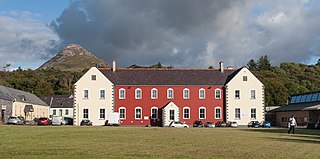
St Joseph's Industrial School was an industrial school for young boys in Letterfrack, County Galway, Ireland. The school was built in 1886/7 after the designs of the architect William Hague, opened in 1887, and run by the Congregation of Christian Brothers.
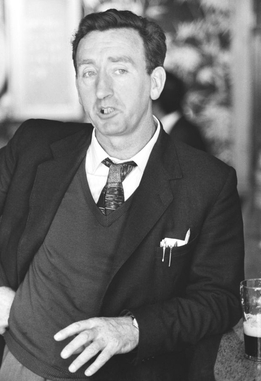
Brian Behan was an Irish writer, public speaker, lecturer, and trade unionist.
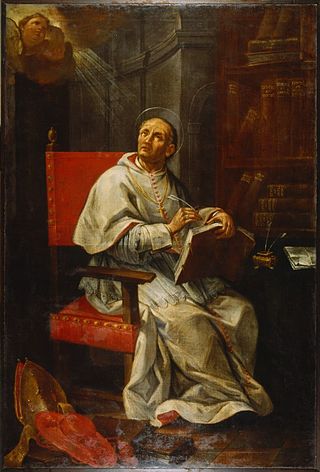
As distinct from abuse by some parish priests, who are subject to diocesan control, there has also been abuse by members of Roman Catholic orders, which often care for the sick or teach at school. Just as diocesan clergy have arranged parish transfers of abusive priests, abusive brothers in Catholic orders are sometimes transferred.

Glin is a village in the northwest of County Limerick, Ireland. It is on the south shore of the River Shannon's estuary, on the N69 road between Foynes and Tarbert. The population of the village at the 2016 census was 576.
The sexual abuse scandal in the Congregation of Christian Brothers is a major chapter in the series of Catholic sex abuse cases in various Western jurisdictions.
St Joseph’s Industrial School, generally referred to as Ferryhouse, is located four kilometres east of Clonmel, in County Tipperary, Ireland. The original building was erected in 1884 by Count Arthur Moore, a wealthy local Catholic as a reformatory for boys. Shortly after its construction, Moore invited the Rosminians to run the school.

Industrial schools were established in Ireland under the Industrial Schools (Ireland) Act 1868 to care for "neglected, orphaned and abandoned children". By 1884, there were 5,049 children in such institutions throughout the country. The act was superseded by the Children Act 1908.
Peter Tyrrell was an Irish author and former inmate of St Joseph's Industrial School, Letterfrack, an institution run by the Christian Brothers.
Allegations of abuse of children in certain institutions owned, managed, and largely staffed by the Sisters of Mercy, in Ireland, form a sub-set of allegations of child abuse made against Catholic clergy and members of Catholic religious institutes in several countries in the late 20th century. The abusive conduct allegedly perpetrated at institutions run by the Sisters of Mercy ranged from overuse of corporal punishment to emotional abuse, and included some accusations of sexual abuse by lay persons employed at the institutions.
Carriglea Park was an industrial school in Dún Laoghaire, Ireland. The Christian Brothers purchased the property in 1893.
St Patrick's Industrial School, Upton was an industrial school in Upton, County Cork, Ireland.
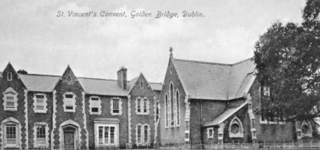
St. Vincent's Industrial School, Goldenbridge, popularly known as Goldenbridge, was an industrial school in Dublin, Ireland. It was run by the Sisters of Mercy.

St Joseph's Industrial School, Tralee was an industrial school in Tralee, County Kerry, Ireland. It was situated on the western side of Tralee, on the road to Ardfert.
St Joseph’s Industrial Schooln was an industrial school in Glin, County Limerick, Ireland.
St Joseph's Industrial School, Salthill was an industrial school in Salthill, County Galway. It was founded in 1871 and was initially managed by the Patrician Brothers under a committee of religious and laymen.
St Joseph's Industrial School, Dundalk was an industrial school in Dundalk, County Louth, Ireland.
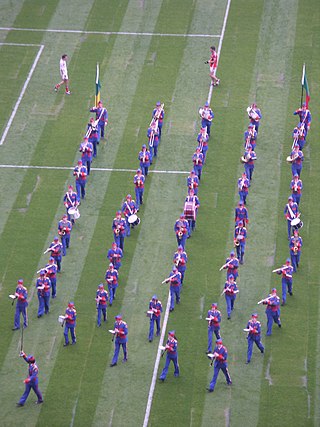
The Artane Band is a marching band for young musicians based at the Artane School of Music in Artane in Dublin, Ireland.
The Magill Youth Training Centre, also known as the Boys Reformatory, McNally Training Centre and South Australian Youth Training Centre (SAYTC) since its founding in 1869, was the last iteration of a series of reformatories or youth detention centres in Woodforde, South Australia. The centre came under criticism in the 2000s for "barbaric" and "degrading" conditions and was replaced by a new 60-bed youth training centre at Cavan in 2012.